
How to DIY your very own face mask
July 6, 2020 | DIY & Home Improvement | No comments
Here’s how to make wearing face masks a lot more fun!
Safety first!
Just to be clear, we’re spare parts fanatics not health professionals, so please do your research on the effectiveness of different types of masks, how to wear them and how to clean them to decide whether or not a homemade mask is right for you.”
When face masks were first announced as a way to stop the spread of the coronavirus, many people were seen out wearing the white, medical-style masks and going about their day. Slowly, as masks became just part of everyday life and we began to get used to our new normal, face coverings got a lot more fun!
I’ve seen flowered ones, patterned ones, ones with favourite characters and TV shows on, and I love them! It’s great how people have embraced this and even let a bit of their personality shine through. Masks have now just become another accessory to add to our wardrobe!
Some of our expressions are hidden by these coverings and we’re no longer able to see or read people from their facial expressions. A mask that shows a little bit about you is a great way to make it a little more friendly.
Feeling inspired by these people being a preacher of DIY, I decided to try and make one myself. I’m definitely an amateur when it comes to making and sewing things, so bear with me.
Here, I’ve tried out a couple of ways of making face masks to help you find the best way for you!
Top tip: You can use any materials you have lying around your home like old scarves or t-shirts you were about to throw away! Some materials that have been recommended though are tightly woven cotton or twill, natural silk or quilted cotton material. I just found some old tops and scarves that were lying around. Here goes nothing!
The ‘no sew’ way
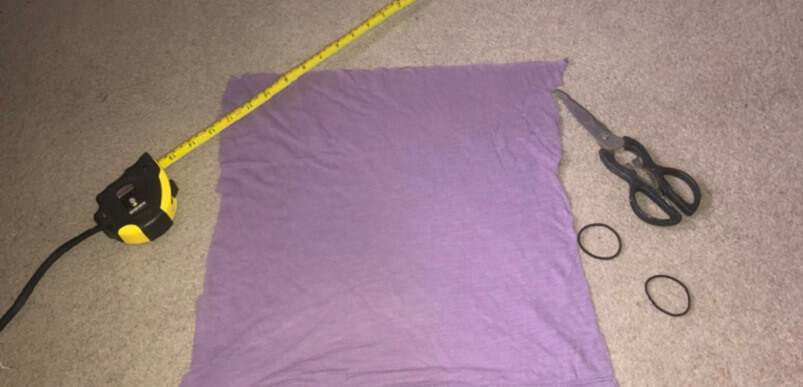
I’m not one for knowing my way around a sewing machine! So when I found this solution that involves no sewing I was all for it! Here’s how I got on.
You’ll need:
A piece of material
Scissors
2 elastic bands (I used hair bobbles!)
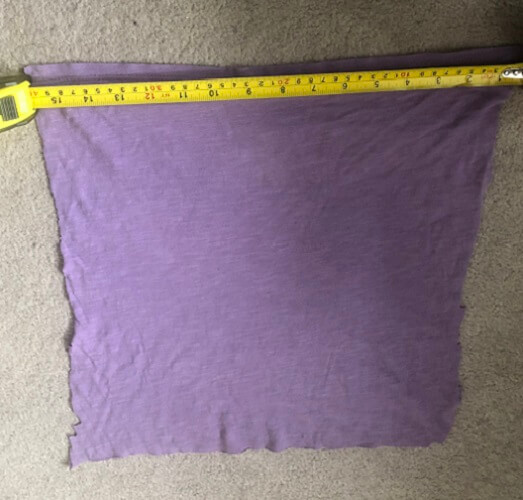
Step 1: Measure your material to an even square shape (around 40x40cm) and cut to shape.

Step 2: Lay the material out flat and fold it in half.

Step 3: Fold the top third section on the cloth downwards and fold the bottom third to meet it in the middle.
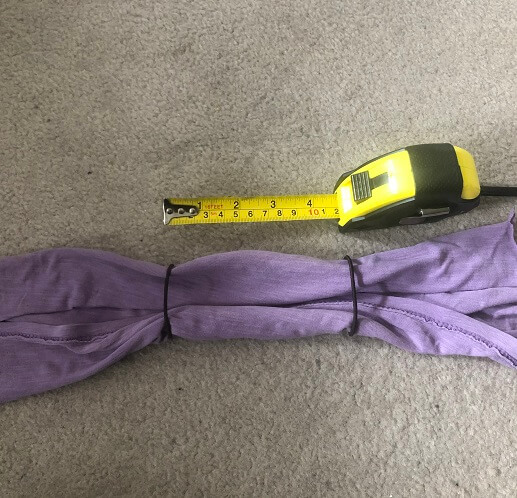
Step 4: Place two elastic bands (or hair bobbles) onto the material around 12cm apart.
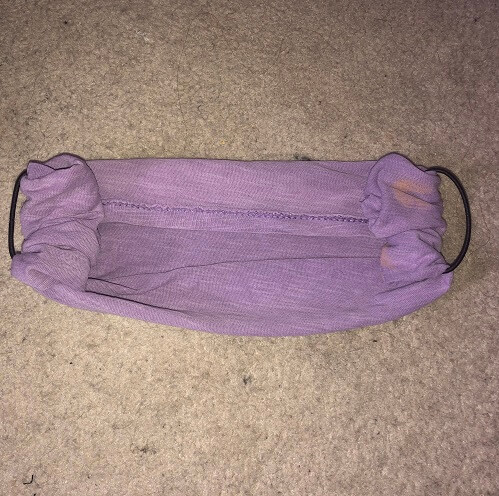
Step 5: Fold each side into the middle and tuck it into the bands.
The results:
Voila! We have a face mask. This method was super easy and a great last-minute solution if you realise you need a mask fast when just popping out to the shops. However, as the material is not secured with anything, it tends to fall out after each use. Here’s the low down.

Positives:
- Easy to make
- Comfortable to wear
- No sewing!
Negatives:
- Needs to be folded into elastic after every wear as it falls apart.
The one that needs the sewing (gulp)

Ok so, I’ve decided to give the sewing one a try! If you have a sewing machine, this will make this process a whole lot easier. I (obviously) did not, so here’s how I attempted it by hand.
You’ll need:
2 pieces of material (measured 25x15cm)
Scissors
Needle and thread or sewing machine
2 pieces of elastic
Kitchen towel
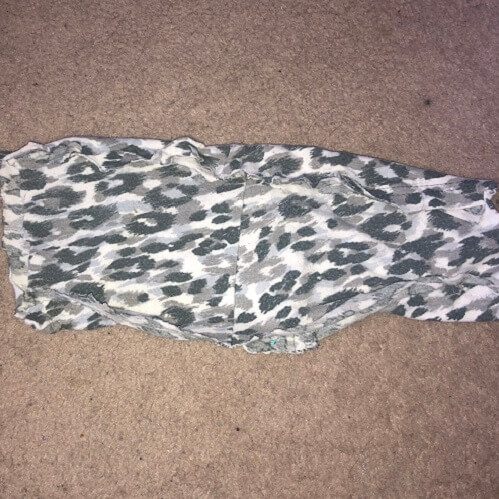
Step 1: Place your two pieces of material with one on top of the other.

Step 2: Fold over the very top of the material (around 1cm) and stitch all the way across.
Step 3: Fold the bottom of the material upwards and stitch around 2.5cm inwards leaving a gap in the middle. This will be your filter pocket.
Step 4: Place a piece of elastic on each side of the material and stitch each side.

Step 5: Tie the elastic together.
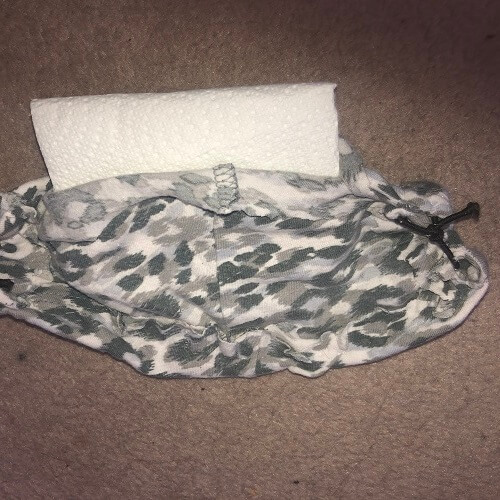
Step 6: Insert a piece of kitchen roll inside the filter pocket. Leave the pocket open as this will need to be changed after every wear.
The results:
Ok so, this one was slightly more tricky but not as hard as I imagined. The hardest part – the sewing! Bearing in mind I took around 10 minutes trying to thread the needle, the process was very time-consuming!
However, the results are great! The mask looks great and is super comfortable, plus it’s ready when you need it. It even includes a filter that you can change after each use.
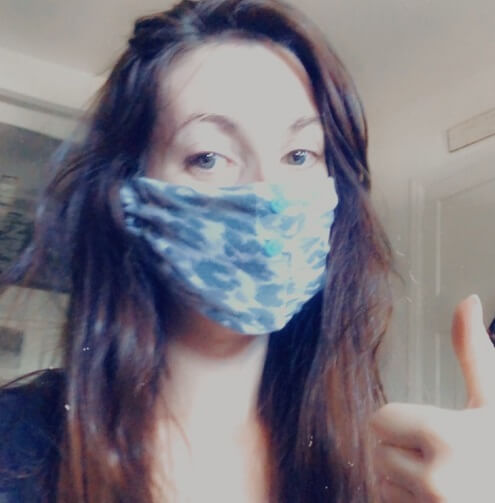
Positives:
- Comfortable
- Ready when you need it
- Includes filter
Negatives:
- Takes a while to make (maybe not if you’re a better sewer!)
So there you have it, my attempts at a DIY face mask! Give it a try and post your creations to our Facebook page. (They can’t be worse than mine!)
Face mask do’s and don’ts

Just for a reminder, here are a few things that are good to keep in mind about when, how and where to wear face coverings.
Why wear a face mask?
Studies have shown that the virus can be spread through the inhalation of droplets produced by coughs and sneezes and fine-mist aerosols generated by breathing. Face masks help to prevent droplets and aerosol emission from people who have transmitted the virus, some of whom may not even have symptoms.
When should you wear a face mask?
From the 15th June, the government announced that everyone must wear a face covering when using public transport, this includes taxis. Masks should also be worn in busy public spaces or situations when social distancing is difficult.
Who should NOT use face coverings?
Masks should not be worn by children under the age of 2, anyone who has trouble breathing or is unable to remove a mask without assistance.
How do you wear a face mask?
Here are some things to keep in mind when wearing your mask.
- Wash your hands thoroughly or use hand sanitiser before applying your mask.
- Ensure there are no holes or tears.
- Remember to avoid touching your eyes, nose, or mouth at all times.
- After removing the mask be sure to wash your hands again.
- If you have a disposable mask, throw it away straight away.
- If you have your own washable mask, store it in a plastic bag until you have an opportunity to wash it.
- Wash your face-covering after every use and replace the filter if it has one. It can go in with your other laundry using your normal detergent.
For more of eSpares tips to tackle the new normal, check out our 10 ways to pass the time while you’re stuck in a queue!
Tags: DIY, Face Masks, Lockdown 2020

